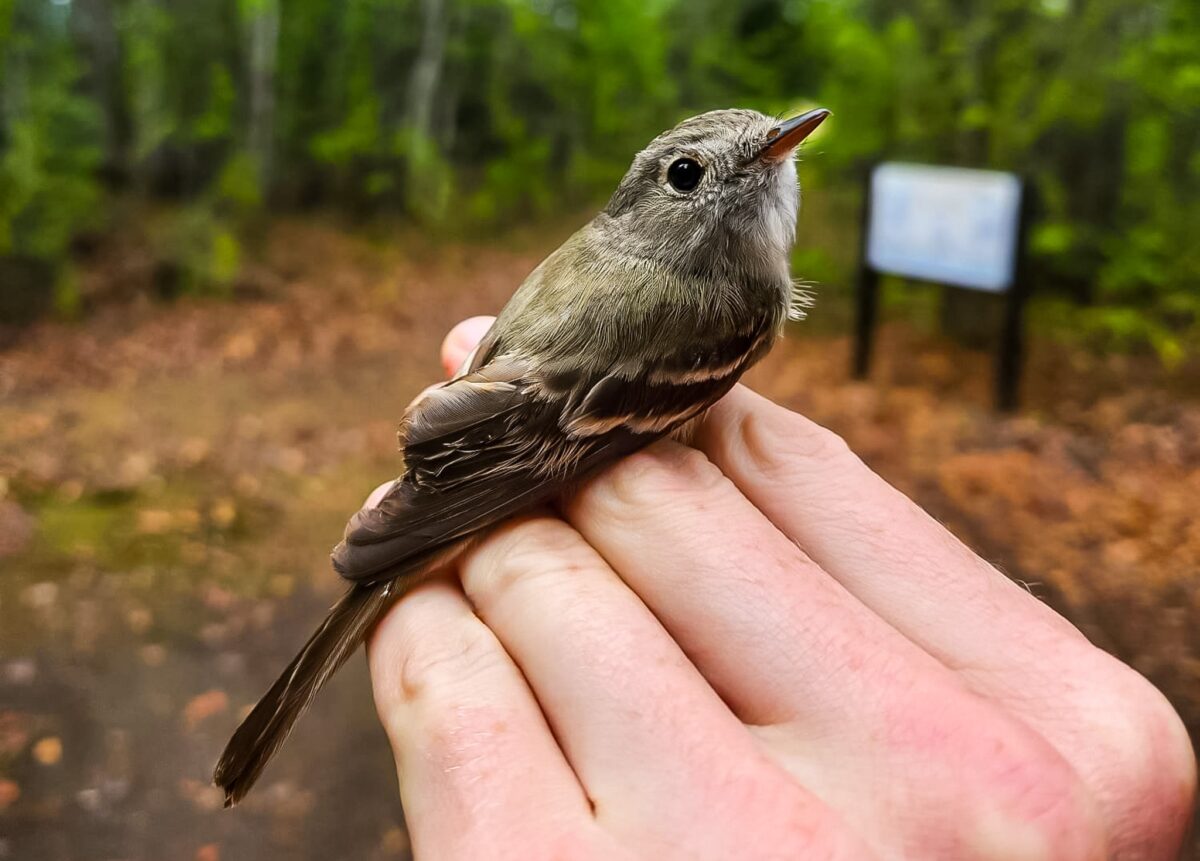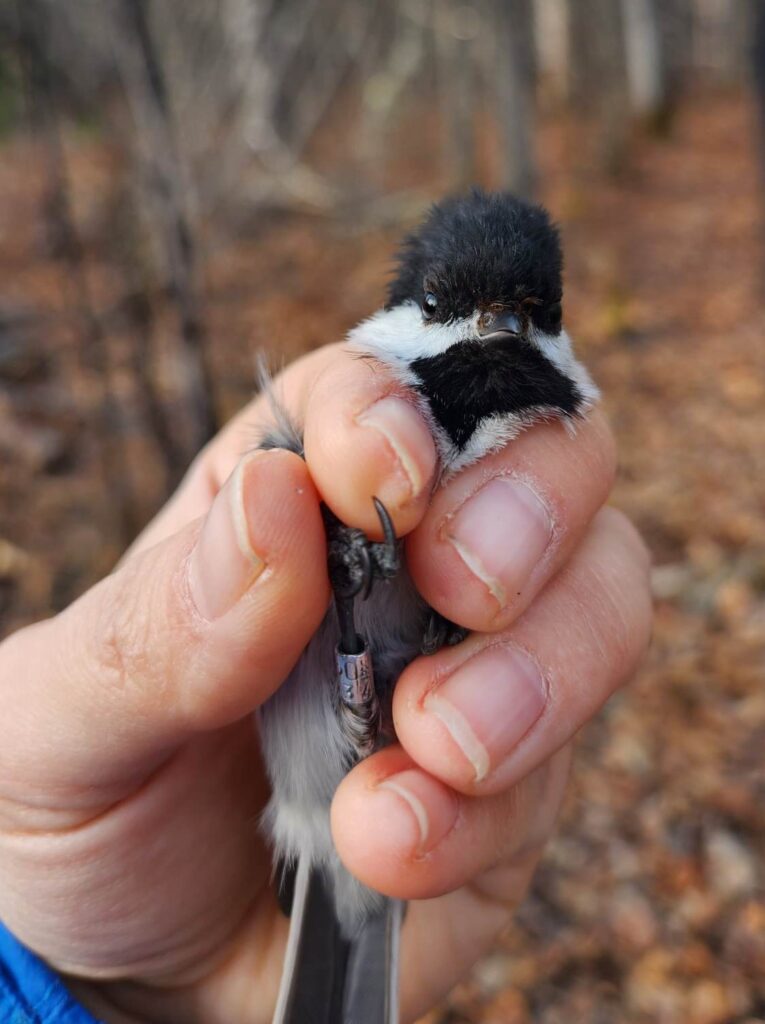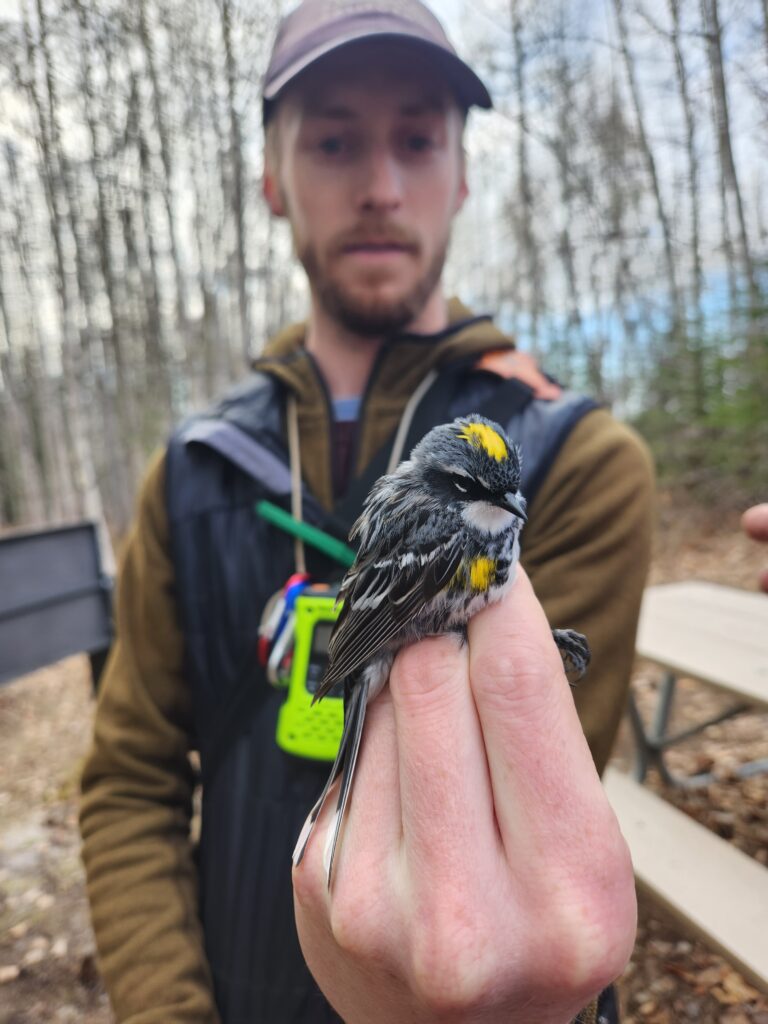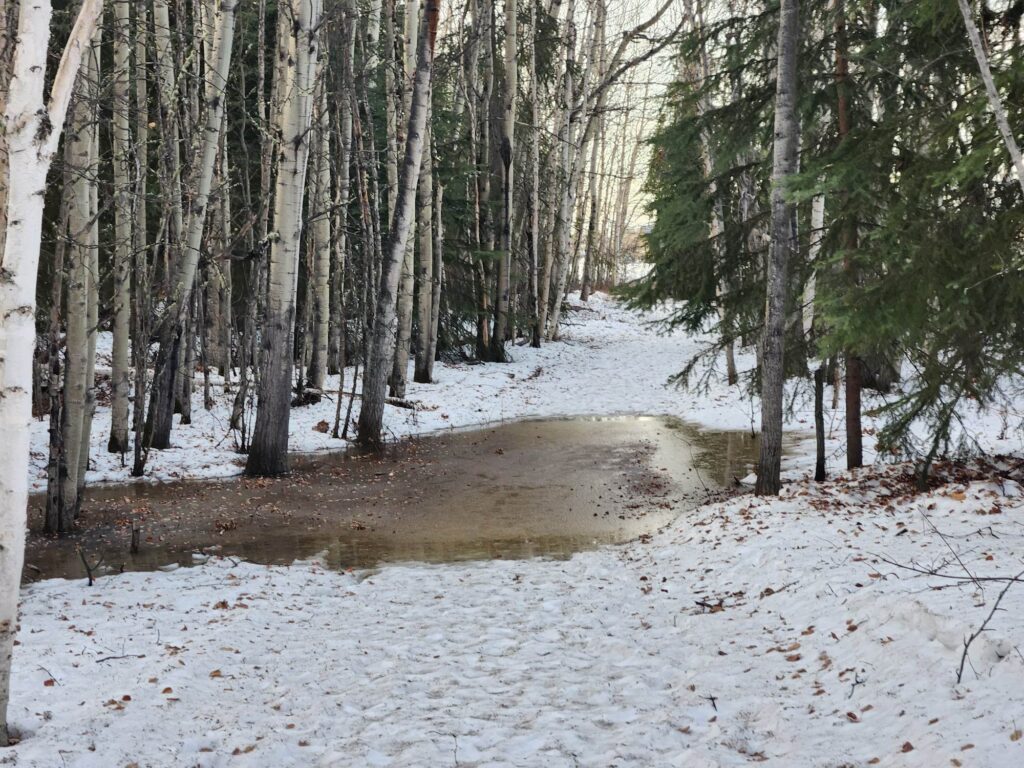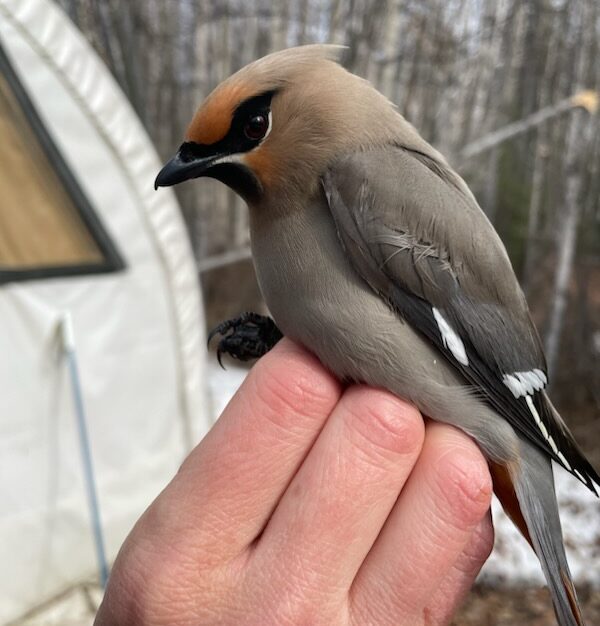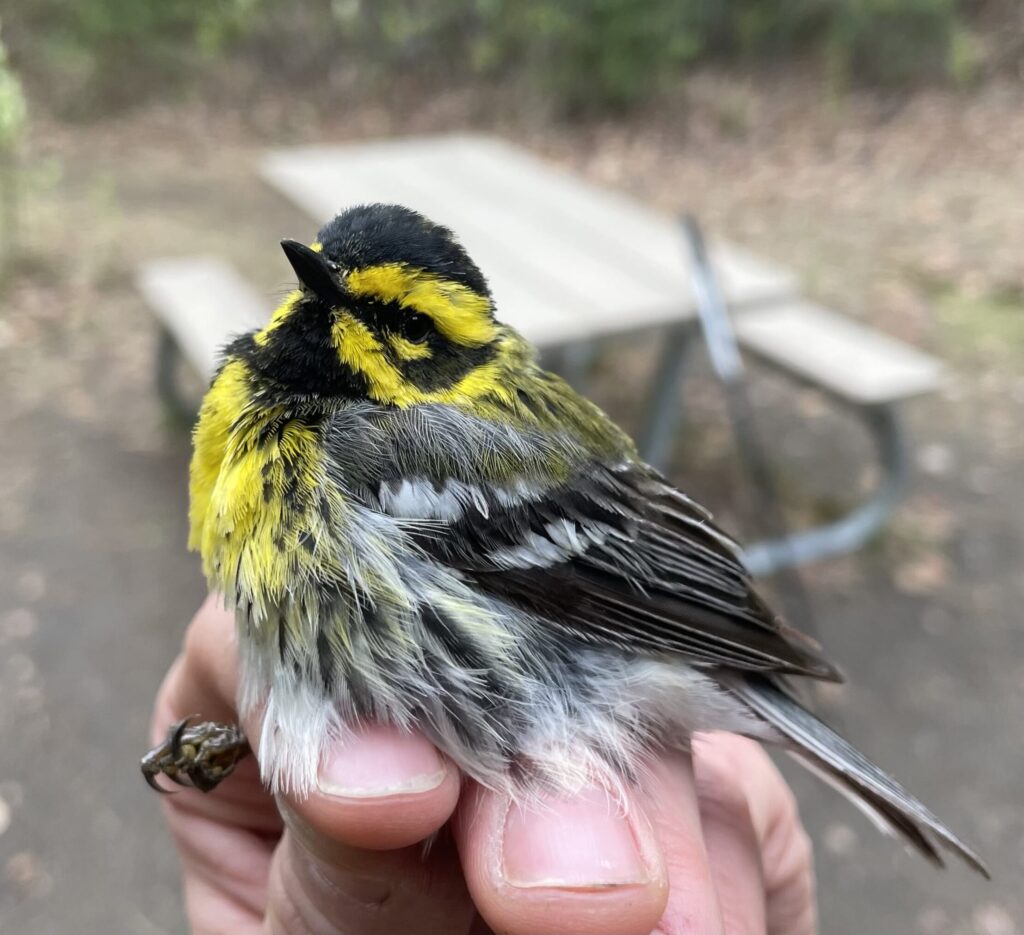For decades, the site of the former dairy and current Creamer’s Field Migratory Waterfowl Refuge has been distinguishable by the grand white barns, expansive open fields, white pillars of birch trees on the wetland, plentiful wildlife, and miles of trails. Amid the various habitats and wildlife, the refuge is best known by birdwatchers, photographers, and researchers for its abundance of birds. The refuge hosts resident and migratory birds of all types including waterfowl, shorebirds, Sandhill Cranes, seabirds, birds of prey, and songbirds.
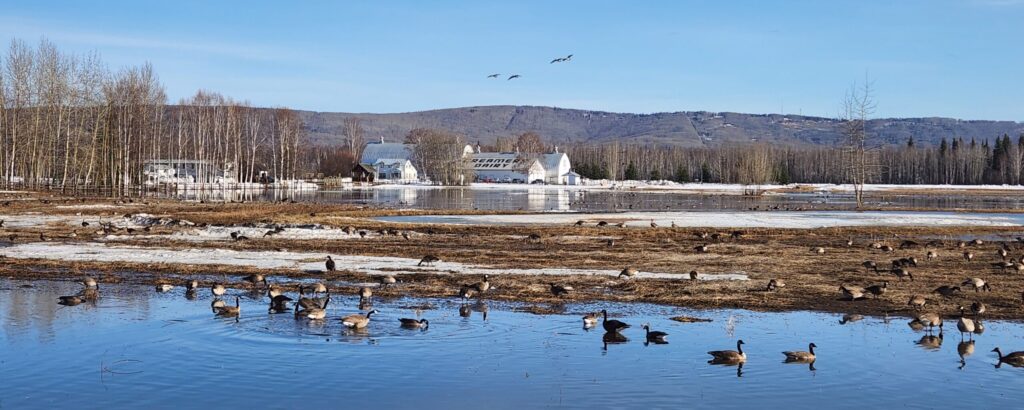
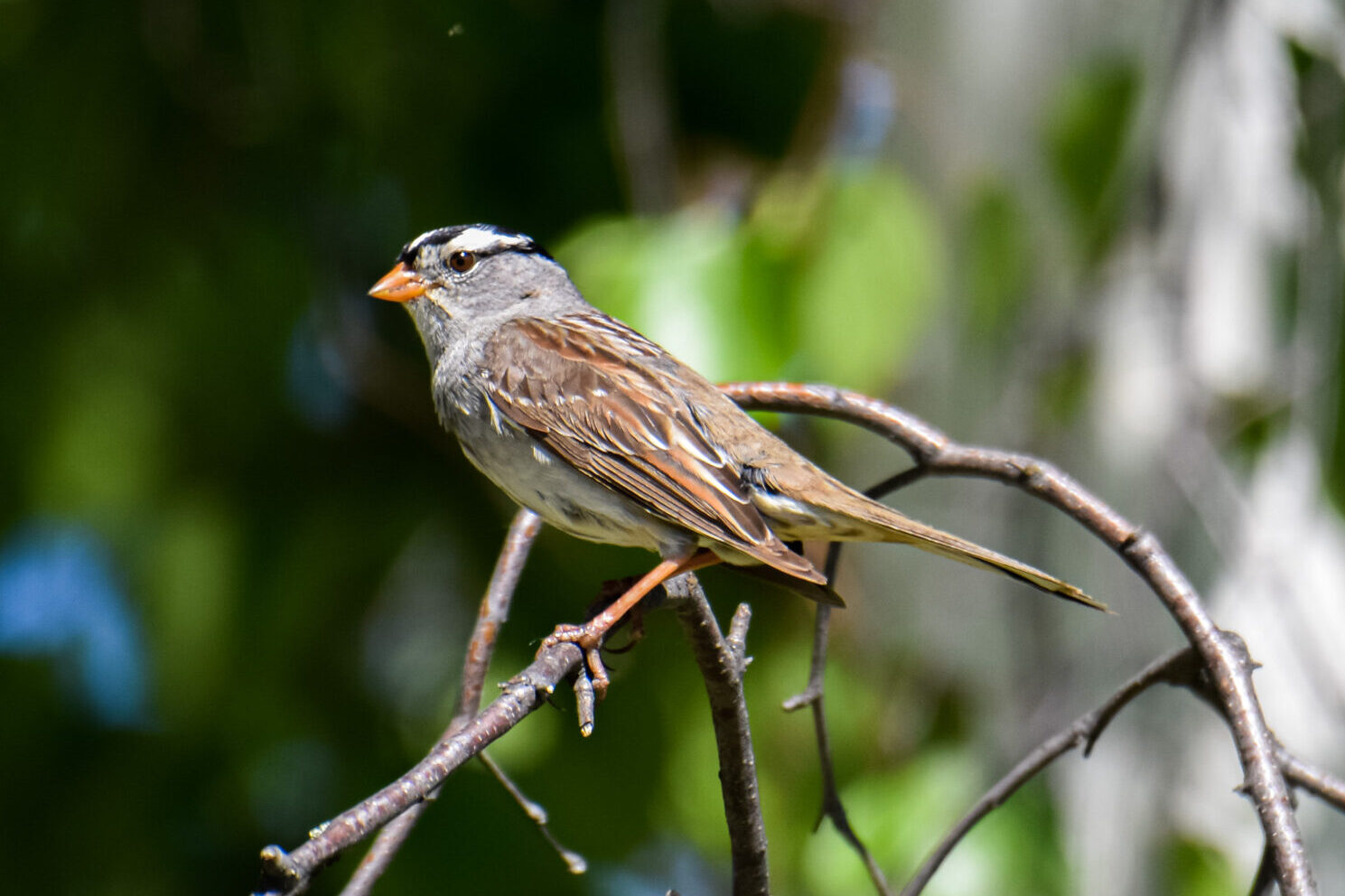
Songbirds at Creamer’s Field are notable for the vast amount of data they’ve provided to scientists over the decades at the research station based here. To find it, visitors must venture to the west side of the refuge. Along the Seasonal Wetland Trail, nestled back in the boreal forest at the center of numerous converging footpaths, is the northernmost continually operated songbird banding station in North America: The Creamer’s Field Migration Station (below).
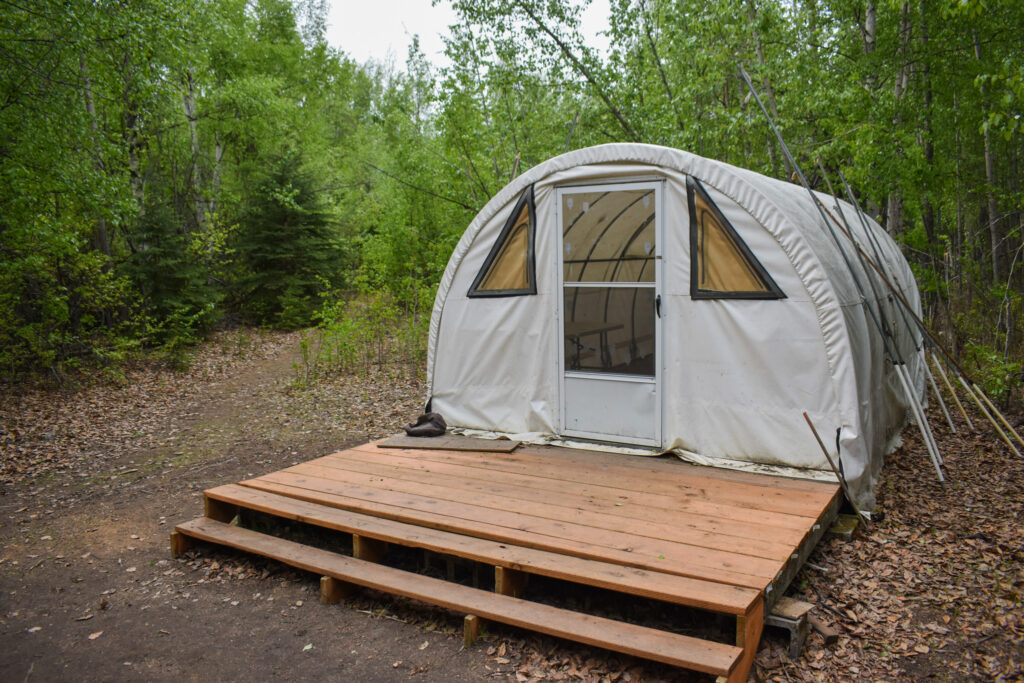
The Creamer’s Field Migration Station (CFMS) was established by Tom Pogson who began monitoring songbird populations on the refuge in the fall of 1991. He later founded the Alaska Bird Observatory (ABO) obtaining it’s 501(c)(3) determination in 1992, which was the first full year of operation at the station with spring and fall banding seasons. The CFMS was run by ABO until being taken on by the Alaska Songbird Institute (ASI) in 2013. Over the last 31 years, over 122,000 songbird captures have taken place; accounting for birds that were newly banded and banded birds that were recaptured. This data provides a wealth of knowledge about the bird populations in Interior Alaska.
Why band birds?
According to the US Geological Survey (USGS), birds can be indicators of environmental health because they are sensitive to habitat change. Changes in bird populations can indicate environmental stressors, such as impacts from extreme weather or human development, which could affect other parts of the ecosystem. Avian conservation science is conducted to monitor all these stressors. The program dedicated to the effort is the USGS Bird Banding Laboratory. The lab, now based in Laurel, Maryland, was established in 1920 to study and help protect North American birds. The USGS laboratory issues permits for banding in the US, distributes around 1 million aluminum bands per year to participating scientists in the US and Canada, and is a central repository for banding records in both countries.
Photos by Melanie Graeff. (Left) Robert Snowden handling a Wilson’s Warbler, (middle) a banded Black-capped Chickadee, and (right) birds in cloth bags waiting to be banded.
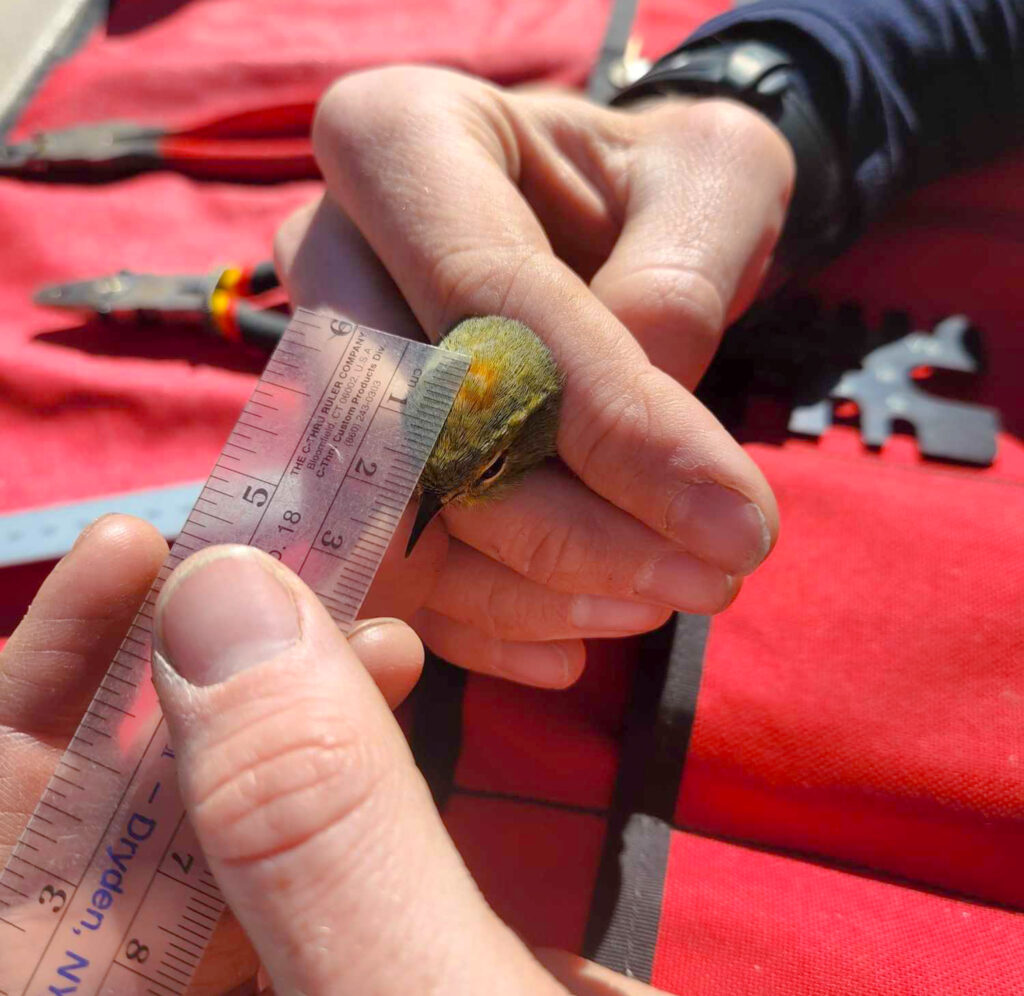
Scientists can keep track of individual birds by placing an aluminum band on a bird’s legs. Each band has a numerical combination of 8- or 9-digits; unique to only that bird. Every time a scientist bands a bird, they record the location and date as well as the bird’s species, gender, estimated age and other features, and send that information to the lab.
The capture and banding are done by highly trained researchers to ensure the birds’ well-being. The USGS works with The North American Banding Council, which develops banding materials and addresses safety regulations. If a bird is recaptured later in its lifetime, sometimes even thousands of miles from where it was first banded, researchers can learn about that species’ migration patterns, longevity, and ecology. Data from these banding projects and stations have been vital in understanding and monitoring avian species all over the world.
Gotta catch ‘em all!
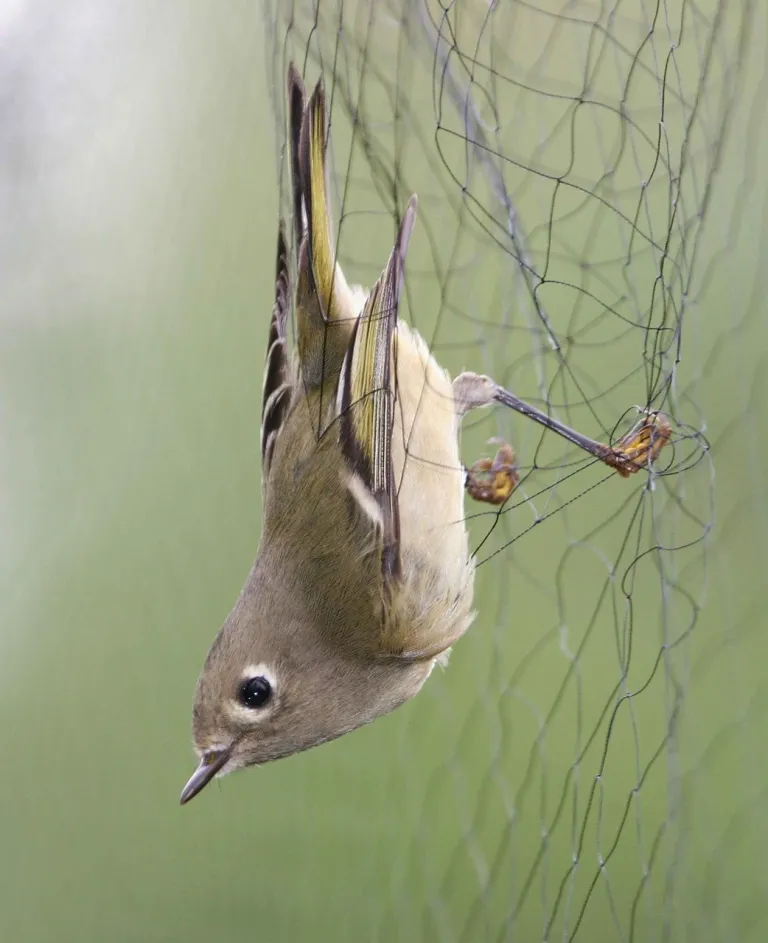
Songbirds are small and fast, and capturing them can be rather tricky. Researchers at CFMS utilize mist nets to capture songbirds. Mist nets have a very fine mesh, appearing nearly invisible when set up, and allow researchers to efficiently catch birds while minimizing the risk of harm. The CFMS research area uses around 30 nets that vary in width and height depending on the surrounding habitat where they are placed, and the desired species sought. It is important that nets aren’t placed too closely together to get a dispersive number of species in different habitats and to lessen the number of recapturing birds banded on the same day. However, the nets need to be close enough and within reasonable walking distances for those monitoring the nets. This setup is intended for songbirds to fly into the nets in a passive capture design. The nets do not hurt the birds and they rest in the pocket of the net like a hammock. The nets are checked very often, and birds are removed quickly and carefully by trained staff and volunteers.
Spring Banding at Creamer’s Field
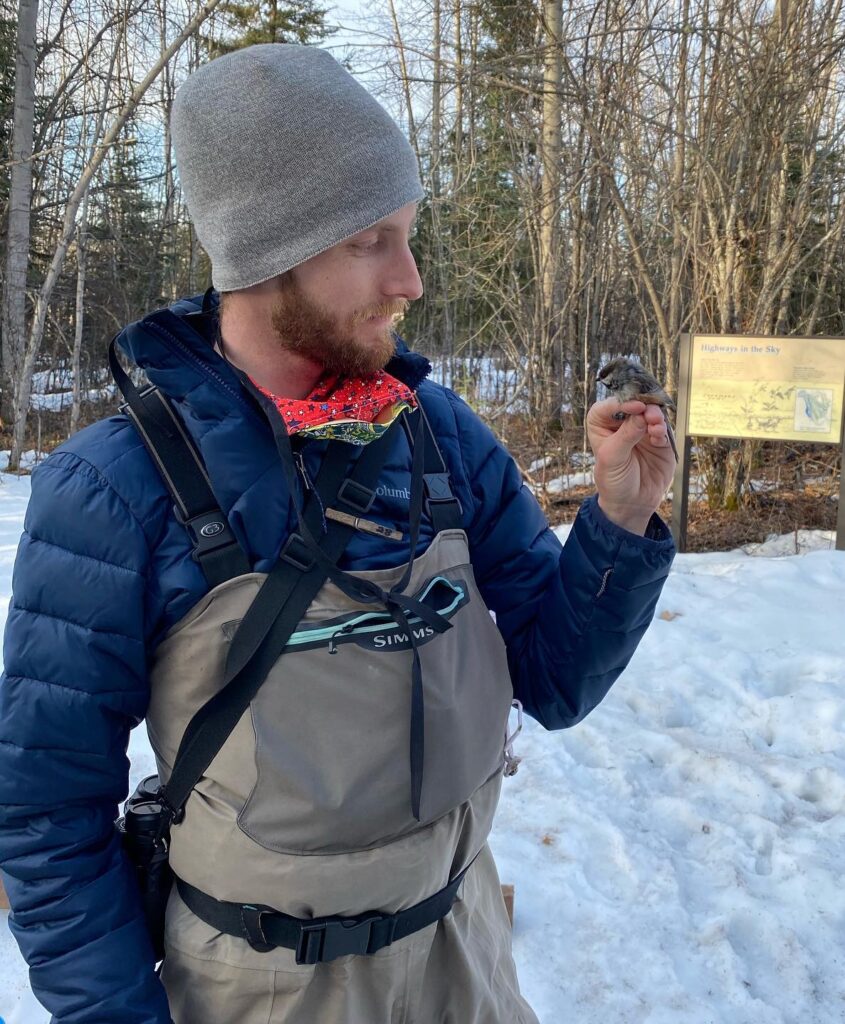
Banding was conducted this spring season at the CFMS under the leadership of the Project Director, Robert Snowden (right). Robert joined ASI in 2021 and he has worked on avian monitoring projects across the US and has managed seasonal banding stations in southern California, Colorado, and Nebraska.
This spring, the station operated from May 1 – June 2 on weekdays from 7 am – 12 pm. In contrast to the fall season, the spring banding season can be constrained due to seasonal conditions like persistent snowpack and standing water (bottom right) which can limit operations. Due to these conditions, about 13-17 nets were utilized for the spring season.
In one month, the station captured 217 birds in total (135 newly banded birds and 82 recaptures) of 21 different species. The station was seeking to capture resident and migratory songbirds as they begin their early breeding season.
Photos by Melanie Graeff, (left) Robert with a Yellow-rumped Warbler (Myrtle) and (right) standing water blocking a trail in the research area.

The most common spring bird species caught and banded are Common Redpolls (right). The full species list for the spring included: Dark-eyed Junco (Slate), Black-capped Chickadee, American Tree Sparrow, Yellow Rumped Warbler (Myrtle), Fox Sparrow, White-crowned Sparrow, Swainson’s Thrush, Bohemian Waxwing, Hairy Woodpecker, Orange-crowned Warbler, American Robin, Savannah Sparrow, Wilson’e Warbler, Hammond’s Flycatcher, Ruby-crowned Kinglet, Northern Waterthrush, Lincoln’s Sparrow, Gray-cheeked Thrush, Townsend’s Warbler, and Yellow Warbler.
Some notable captures from this season:
- Four Bohemian Waxwings (bottom left) were caught on May 8! These birds tend to stay higher in trees and don’t venture down close to the nets very often. Prior to this season, there were only 17 total capture records of this species, and none caught since 2017.
- Another standout was the first Townsend’s Warbler (bottom right) capture of the year on May 31, a young male from the very top of one of the stacked nets among the spruces. Though this is a more common bird caught during the fall season, this was the first springtime Townsend’s Warbler caught in the 31 years of the station’s operation.
Left photo by April Harding Scurr, Bohemian Waxwing. Right photo by Robert Snowden, the first springtime Townsend’s Warbler banded at the station.
With the conclusion of the spring season, the CFMS will take a short break until the end of July when the fall banding season begins!

This season welcomed Georgia Houde (right) to ASI as the new Science Educator/Communication Specialist! Georgia hails from New Hampshire and developed an appreciation for flora, fauna, and songbirds. Since moving to Alaska, she has worked as an educator and conducted field research. She facilitated spring field trips with local schools with kids of all ages showing them about songbirds and the importance of bird banding. She looks forward to conducting field research and educational field trips this summer and fall season!
Ways to Help
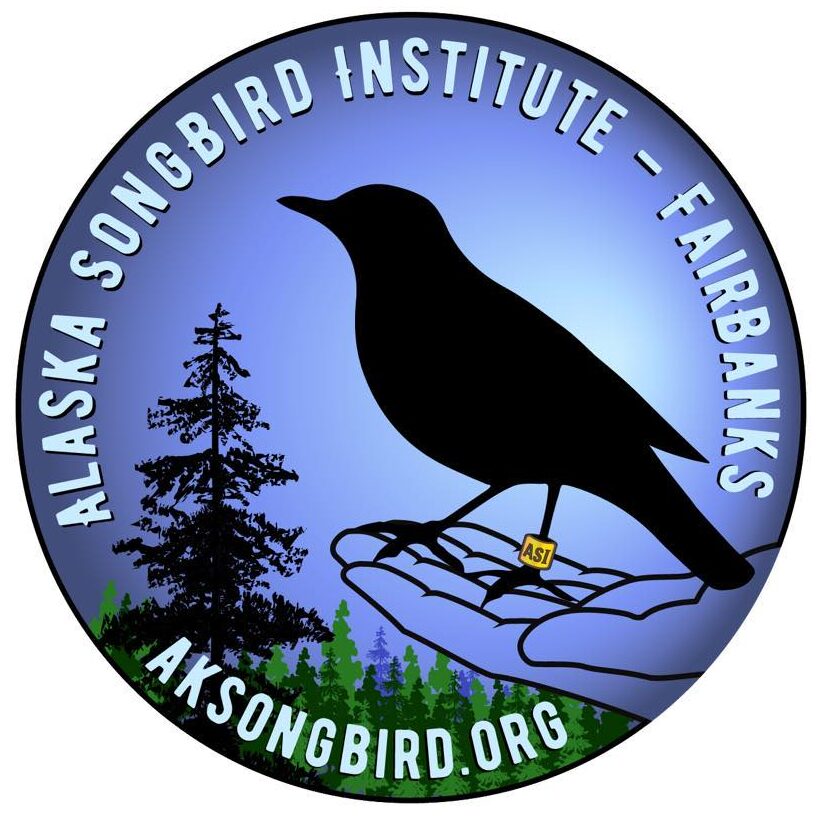
Want to contribute to bird research with the Alaska Songbird Institute? Volunteers are invaluable in making the field work at the Creamer’s Field Migration Station happen! There are many opportunities to help, from “picking” birds from mist nets to data entry, event planning, serving on an advisory committee, and more. There are opportunities for people of all ages, and with a diversity of skill sets. Visit the Alaska Songbird Institute’s website here for more information on how you can help!
Resources:
“Banding Birds”. Ornithology: the Science of Birds, 2014, https://ornithology.com/banding/.
“Creamer’s Field Migration Station (CFMS).” The Alaska Songbird Institute (ASI). https://aksongbird.org/about-us/our-projects/cfms/.
Shaull, Lori. “A researcher removes a bird from a mist net at a bird banding station at Murphy-Hanrehan Park Reserve in Savage, Minnesota,” Wikimedia Commons, May 19, 2020. https://commons.wikimedia.org/wiki/File:A_researcher_removes_a_bird_from_a_mist_net_2.jpg
“USGS Celebrates 100 Years of Bird Banding Lab: U.S. Geological Survey.” U.S. Geological Survey, July 7, 2020. https://www.usgs.gov/news/featured-story/usgs-celebrates-100-years-bird-banding-lab.
Information and photos compiled by Melanie Graeff, the Programs & Events Coordinator with the Friends of Creamer’s Field.

